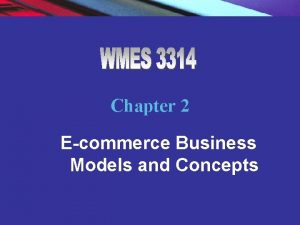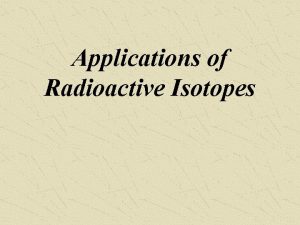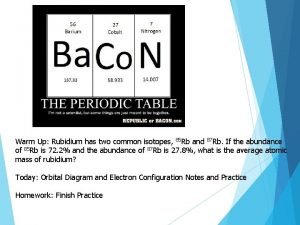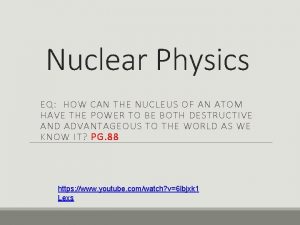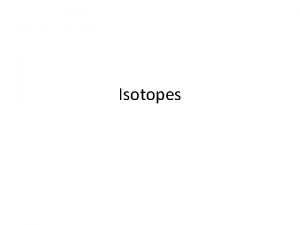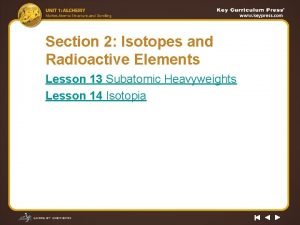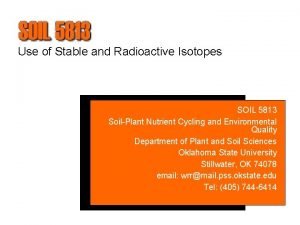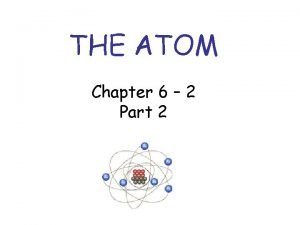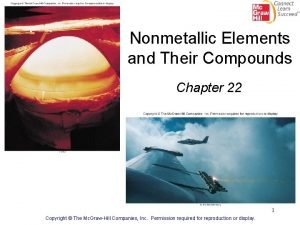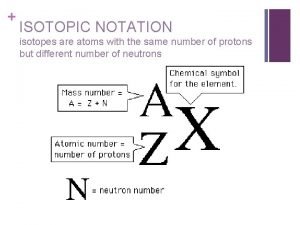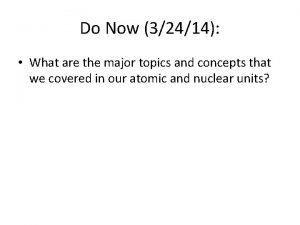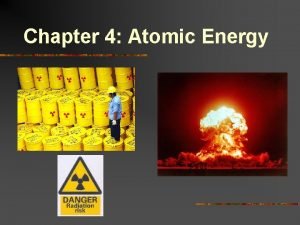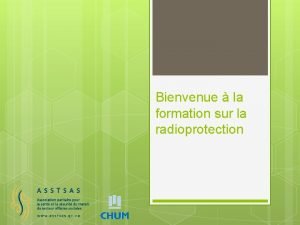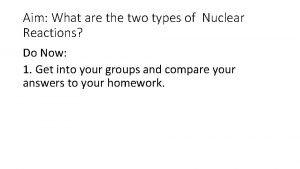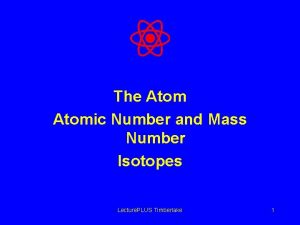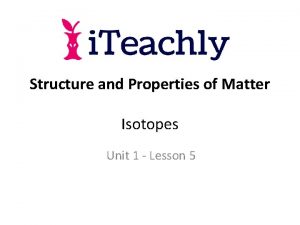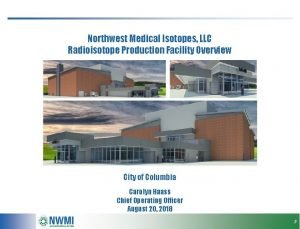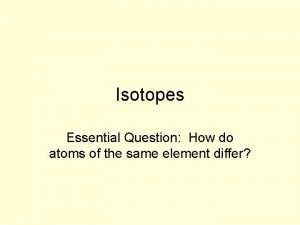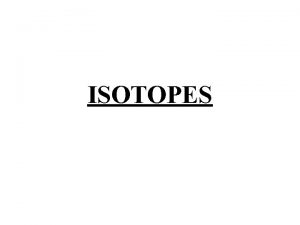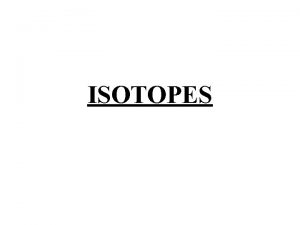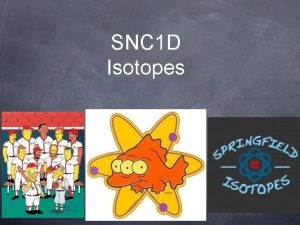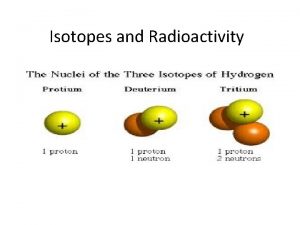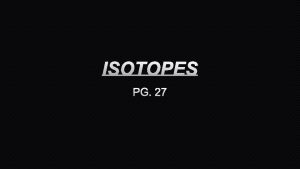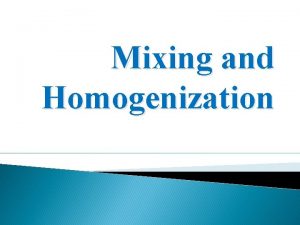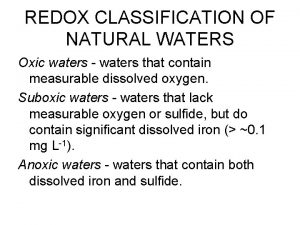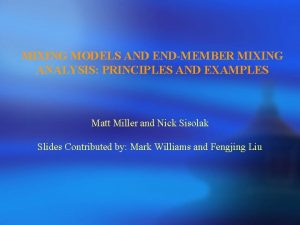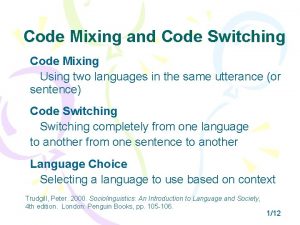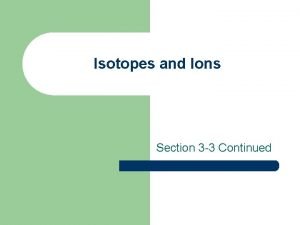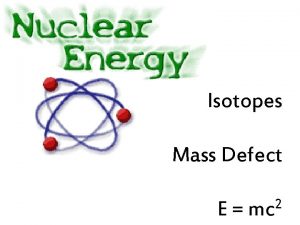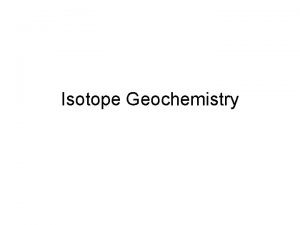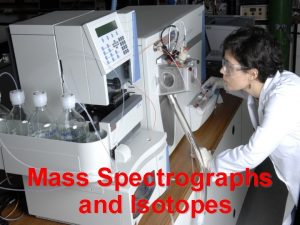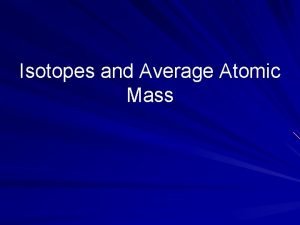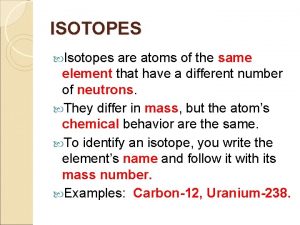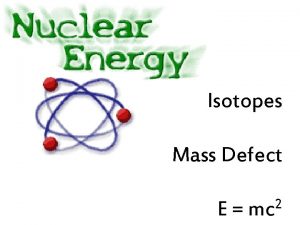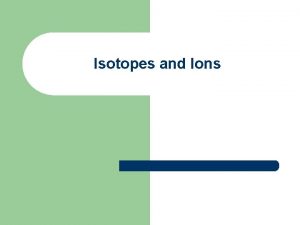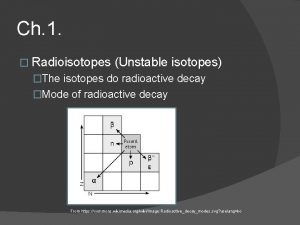Using isotopes to identify source waters mixing models




























- Slides: 28

Using isotopes to identify source waters: mixing models Mark Williams, CU-Boulder



MWL ( 18 O- D) graph can tell us: Sources of groundwater recharge: Average annual precipitation Summer rain Winter rain/snow Very old water, eg “Pleistocene age” Recharge flowpaths Piston flow Exponential flow

Problem: Regional groundwater vs South Platte river water as recharge to wells New well users near the South Platte River do not have water rights to Colorado River water Sued because downstream water users with senior water rights say that the wells are pumping their water What can the state engineer do? What can a consultant do for their client (on either side of the debate) Isotopes to the rescue!




2 -component mixing models We can go from these simple examples to a general equation that works for almost all systems We assume our “sample” (well-water, streamflow, etc) is a mixture of two sources We can “unmix” the sample to calculate the contribution of each source Either as a mass of water or percentage

2 Component hydrograph separation ? % Source 1 (River water) Well ? % Source 2 (Groundwater) Tracer = 18 O

River water Well 1 Groundwater X Well 2 Mixing line that connects the two end-members: a) sample must plot between the two end-members b) sample must plot on or near the mixing line.

MIXING MODEL: 2 COMPONENTS • One Conservative Tracer • Mass Balance Equations for Water and Tracer

-10‰ -15‰ -20‰ River water Well Groundwater Let’s put in some actual tracer concentrations.

Calculate the fraction contribution of groundwater and river water to our well Groundwater (g); River water (r), Well (w) Percent river water contribution to the well is: Cw – C g / Cr – C g Sampling only for the tracer concentration (c) allows us to calculate the fraction contribution of each endmember to our mixture We need only three samples! No water flow measurements

2 -component mixing model: calculation Cw – Cg = percent contribution Cr – Cg of river water -15 – (-20) = +5 = 50% -10 – (-20) = +10

2 -component mixing model: assumptions Only 2 components in mixture (groundwater well in this example) Mixing is complete Tracer signal is distinct for each component No evaporation or exchange with the atmosphere Concentrations of the tracer are constant over time or changes are known

Case Study: Hydrograph separation in a seasonally snow-covered catchment Liu et al. , 2004

Green Lake 4 catchment, Colorado Rockies

2 Component hydrograph separation ? % “New” Water (Snowmelt) Streamflow ? % “Old” Water (Groundwater) Tracer = 18 O

Temporal Hydrograph Separation Solve two simultaneous mass-balance equations for Qold and Qnew 1. Qstream = Qold + Qnew 2. Cstream. Qstream =Cold. Qold+Cnew. Qnew Yields the proportion of “old” or “new” water for each time step in our hydrograph for which we have tracer values

GL 4 Dataset Soil Water Stream Water Snowmelt

Data Hydrograph fractions Event formula (new water) (D 10 -B 10)/(D 10 -C 10) Pre-event formula (old water) (B 10 -C 10)/(D 10 -C 10)

Green Lake 4 hydrograph separation

Life is often complicated: 18 O not distinct

Fractionation in Percolating Meltwater Snow surface 18 O = -20‰ Ground 18 O = -22‰ Difference between maximum 18 O values and Minimum 18 O values about 4 ‰

VARIATION OF 18 O IN SNOWMELT • 18 O gets enriched by 4%o in snowmelt from beginning to the end of snowmelt at a lysimeter; • Snowmelt regime controls temporal variation of 18 O in snowmelt due to isotopic fractionation b/w snow and ice; • Given f is total fraction of snow that have melted in a snowpack, 18 O values are highly correlated with f (R 2 = 0. 9, n = 15, p < 0. 001); • Snowmelt regime is different at a point from a real catchment; • So, we developed a Monte Carlo procedure to stretch the dates of 18 O in snowmelt measured at a point to a catchment scale using the streamflow 18 O values.


Summary/Review Isotopes can quantify the contribution of different source waters to wells, etc. 2 -component separation assumes that the sample lies on a line between 2 end-members Assumptions in hydrograph separations Not always met Can extend to 3 or more end-members Simple diagnostic tool that should be consider as one of your first field measurements
 What is the difference between models & semi modals
What is the difference between models & semi modals Identify the key components of e-commerce business models
Identify the key components of e-commerce business models What is this called
What is this called Fertile isotopes
Fertile isotopes How to calculate abundance in isotopes
How to calculate abundance in isotopes Difference between atomic mass and mass number
Difference between atomic mass and mass number Atomic isotopes
Atomic isotopes Uses of radioactive isotopes
Uses of radioactive isotopes Rubidium has two common isotopes
Rubidium has two common isotopes Beta minus decay
Beta minus decay Nitrogen hyphen notation
Nitrogen hyphen notation Atoms and their isotopes pogil
Atoms and their isotopes pogil Atomic mass cl
Atomic mass cl Lesson 13 subatomic heavyweights isotopes
Lesson 13 subatomic heavyweights isotopes Isotopes
Isotopes What is isotope
What is isotope Oxoacids of nitrogen
Oxoacids of nitrogen Isotope notarion
Isotope notarion Hydrogen isotopes
Hydrogen isotopes Isotopes
Isotopes Isotopes radioactifs
Isotopes radioactifs Hydrogen isotopes
Hydrogen isotopes Mass number vs atomic mass
Mass number vs atomic mass Isotopes examples
Isotopes examples Isotopes properties
Isotopes properties Northwest medical isotopes
Northwest medical isotopes The isotope atoms differ in *
The isotope atoms differ in * Isotopes examples
Isotopes examples Examples of isotopes
Examples of isotopes

